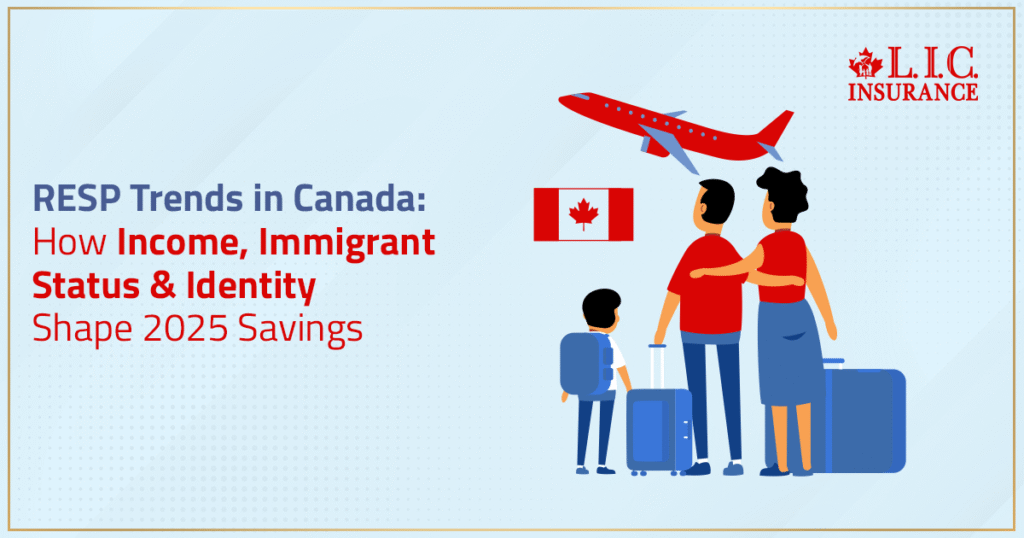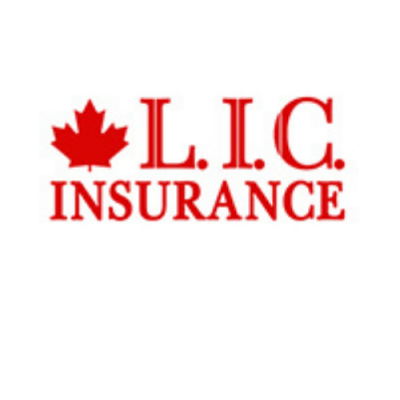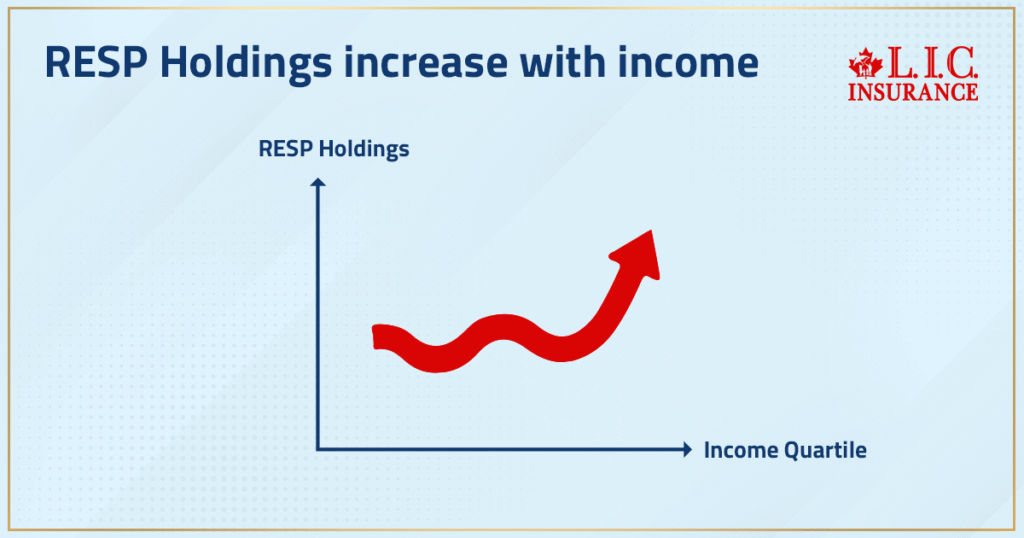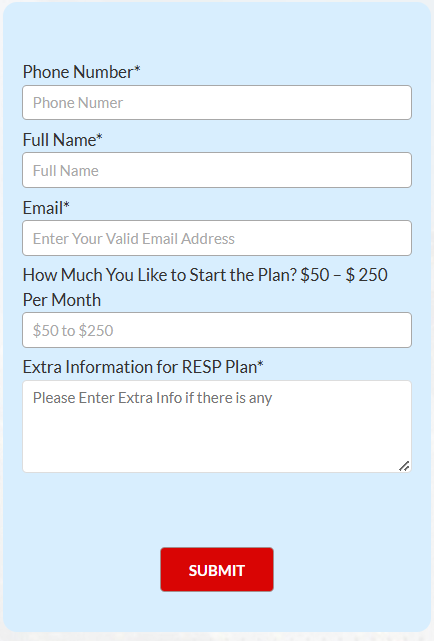- Connect with our licensed Canadian insurance advisors
- Shedule a Call
BASICS
- Is Infinite Banking A Smart Financial Strategy?
- Understanding the Infinite Banking Concept
- Why Infinite Banking Appeals to Canadians Seeking Financial Freedom
- How Infinite Banking Strategy Helps Build Financial Independence
- Challenges and Misconceptions About Infinite Banking
- Who Should Consider Infinite Banking for Financial Freedom?
- How to Start Your Infinite Banking Journey
- Key Advantages of the Infinite Banking Strategy
- A Day-to-Day Struggle: Why More Canadians Are Exploring Infinite Banking
- Potential Drawbacks You Should Know
- The Future of Infinite Banking in Canada
- Is Infinite Banking a Smart Financial Strategy?
COMMON INQUIRIES
- Can I Have Both Short-Term and Long-Term Disability Insurance?
- Should Both Husband and Wife Get Term Life Insurance?
- Can I Change Beneficiaries on My Canadian Term Life Policy?
- What Does Term Life Insurance Cover and Not Cover?
- Does Term Insurance Cover Death?
- What are the advantages of Short-Term Life Insurance?
- Which Is Better, Whole Life Or Term Life Insurance?
- Do Term Life Insurance Rates Go Up?
- Is Term Insurance Better Than a Money Back Policy?
- What’s the Longest Term Life Insurance You Can Get?
- Which is better, Short-Term or Long-Term Insurance? Making the Right Choice
IN THIS ARTICLE
- What is the minimum income for Term Insurance?
- How Does Income Affect Your Term Life Insurance Policy?
- Can You Buy Term Life Insurance Online with a Low Income?
- How Can You Lower Your Term Life Insurance Cost?
- How Much Term Life Insurance Do You Need?
- Can Your Term Life Insurance Policy Be Adjusted Over Time?
- Why Term Life Insurance Is Ideal for Lower-Income Canadians
- Final Thoughts
- More on Term Life Insurance
RESP Trends in Canada: How Income, Immigrant Status & Identity Shape 2025 Savings


By Harpreet Puri
CEO & Founder
- 12 min read
- July 28th, 2025
SUMMARY
Families across Canada face gaps in Registered Education Savings Plan participation driven by income, immigrant status, and policy. We explain how to meet the Registered Education Savings Plan contribution limit Canada, use Canada learning bond and Canada education savings grant, and secure a tailored Registered Education Savings Plans Quote. Strategies cover low-income, temporary workers, permanent residents, and grant maximization.
Introduction
The weight of growing dreams
We’ll also never forget the look in Aisha’s eyes when she told us she had landed her first full-time job here, as a newcomer from Syria. Her hands shook as she asked whether she could open a Registered Education Savings Plan in Canada for her daughter, though she wasn’t even confident that she would make enough this month to pay rent in the coming month. Her bravery proved something very important to us, that money speaks less about numbers and more about hope.
RESP Trends in Canada: How Income Shapes Savings
More than 40 per cent of all registered education savings accounts are held by families in the top income quartile. People in the lowest-income quartile often have trouble making ends meet, with barely enough left over to give. As a firm that is made up of real human beings all across our country, we’ve witnessed how household disposable income directly affects participation and contribution limits in the Registered Education Savings Plan contribution limit in Canada. As discretionary capital dries up, so do the contributions to RESPs. But for those with financial breathing space, it adds up every dollar as a building block for a child’s future.

Registered Education Savings Plan in Canada: Who gets left behind
More than half, regardless of status, open an RESP account in their first five years, except for protected persons and refugee claimants — fewer than one quarter do. The international mobility program gets you your work permits fast-tracked, not extra cash for education savings. That gap widens when contingency employees and TFWs consider high income tax rates against uncertain job security. And we have steered countless clients through the application process, ensuring that even with modest family income, they qualify for the Canada learning bond.
Financial Literacy: A Silent Barrier
Immigrants follow diverse pathways regarding financial literacy. Many newcomers are bilingual, but they remain second-in-command with words like “grant,” “bond,” and “contribution limit.” One of that organization’s clients, Ravi, who recently came to Canada from India, didn’t receive the Canada learning bond because he thought it was a loan. We explain how loans and government grants differ.” It’s an epiphany that transforms that hesitation into action — they contribute for once, they keep track of the fiscal years, and voilà, the savings grow tax-free.
Immigration System and Access to Education Savings
Policies matter. The Canadian government has fine-tuned its immigration policy to foster family unity. Reliance on permanent residency for instant eligibility for the Canada learning bond. But in the meantime, social services and relationships to the community often come into play instead. In British Columbia, we partnered with a local not-for-profit organization to provide RESP workshops for newcomers. They walked out not just with forms filled out, but with purpose. Yet nearly a third of asylum claimants never show up to workshops, uncertain they’re allowed to attend. Which is why we have been reaching caseworkers directly, so no one sits out.
Registered Education Savings: Beyond the Basics
An RESP is not just a bank account. That’s a guarantee with a little help from the federal government’s Canada education savings grant, which adds 20% on the first $2,500 deposited each year. Wealthier families could max out their grants. Low-income families pay less tax, but also receive larger Canada learning bond cheques, worth up to $2,000. The math can feel complex. The trick? Show clients a year-by-year projection. We have plain charts — no jargon — so they can see that their savings are growing before the interest begins to compound. That clarity sparks action.
Family Income Gaps: Data from Statistics Canada
And low-income families hold about 5%, according to the latest statistics from Statistics Canada. The overall gulf in participation between those from wealthy families and those from poor families is astounding — more than $5 billion of unused grant room at some levels. That’s kids who will miss out on future tuition relief. We’ve pushed for workshops in areas where coverage is behind — areas like rural Atlantic provinces — so families aren’t excluded from opportunities on the basis of geography.
Post-Secondary Education Costs vs. Savings Reality
School fees go up each financial year. If you’re saving for a four-year undergraduate degree, you might need $40 000 or more. But when all is said and done, the typical RESP investment per child is about $10 000. Where’s the rest coming from? Student loans. Scholarships. Parental savings outside RESPs. Families are tightening belts, living lean on income tax returns to funnel every dollar into a child’s RESP account. And, with intelligent borrowing strategies, you can supplement grants without crippling debt.
Gov't Incentives: Use Them Early
Canada learning bond. Canada Education Savings Grant. A few provinces have additional incentives for this — Quebec tacks on its own grant, for instance. But no stack is infinite. You have to open an RESP by the end of the year the child turns 17, and contributions have to start by the end of the year 0. You’re forfeiting free money for every year you wait. Two families that we advised both delayed — one forfeiting $500 worth of free grant space, the other, $2,000 eligibility for a Canada learning bond. That memory is what stays with us: Timing matters.
Immigration Policy Shifts & RESP Participation
When the Canadian government moves the posts of work permit rules under the immigration system, new residents, depending on the circumstances, feel a sense of relief or anxiety. In 2024, rule tweaks expanded open work permits for skilled workers’ spouses. We told clients immediately, “Your spouse now has a better chance to qualify for grants.” Their contribution rates increased by as much as 30%. Policy changes create windows of opportunity. We follow federal updates so you don’t have to.
Registered Education Savings Plans Quote: Making It Personal
Registered Education Savings Plan Quotes aren’t just numbers. They’re conversations. Mirjam, an Eritrean asylum seeker, when she requested a quote, we didn’t just spit out rates. We asked her about her plans for the future: university, abroad? Community college? Then we put together a projection to show how $25 in monthly contributions — less than the cost of a takeout dinner — could turn into $5,000 in a decade. She smiled and immediately signed up for duty. A short quote in black ink and white paper felt like a sudden fulfillment of a promise.
Registered Education Savings Plan Contribution Limit Canada: Navigating Rules
The contribution room carries forward every year — $2,500 in grant-eligible space per year to a lifetime limit of $50,000. But you can over-contribute and incur penalties. One family did it when they meant to send $55,000 to catch up. Penalties are applied immediately. That’s why we also regularly audit this sort of contribution on a quarterly basis. An ounce of prevention is worth a pound of cure. We coach parents: “Keep tabs on what you’ve contributed the way you keep a file of expense receipts — no surprises.”
Canada's Economy & The Future of Education Savings
Canada’s economy expands and contracts. When stronger growth is the trend, families are more comfortable cranking up their RESP contributions. In downturns, contributions dip. That cycle requires smooth sailing. We advise clients to automate the contributions — $100 a month, every month, regardless of the weather. That consistency levels out valleys and makes dollar-cost averaging work for you. Small, consistent behaviour gets the job done and provides stability, no matter how much your income jumps around.
Education Savings Plan, RESP & The Role of Community
No one stands alone. Community organizations, schools, and religious institutions act as centers for spreading information about RESPs. We donate free seminars that are held locally in libraries. We partner with parent councils. With each departure of a participant with a plan, there is a water ripple, dragging neighbours toward action. At the end of the day, word of mouth is the most effective mode of participation, surpassing any ad campaign.
Government of Canada & Fiscal Year Timing
RESP grants are made after the end of each fiscal year. Clients occasionally panic, under the mistaken impression that if they don’t meet the March 31 deadline, they will lose funds. In fact, they have until the end of December to deposit and claim their grant for that year. Clarity in timing prevents panic. We publish reminder calendars. One family went to school on our calendar, and captured $1,250 in grants they almost didn’t get. For those households, that relief brightened their holiday season.
Significant Difference: Small Steps, Big Gains
We’ve seen families begin with as little as $25 a month — hardly a blip on the radar screen. Five years later, they open a university account, pull out $10,000 for tuition without loans and are relieved. Those baby steps add up to a lot when given time. That’s the magic of compound growth in a well-utilized RESP account.
Permanent Residents & Access Hurdles
Permanent residents and others (with the exception of Canadian citizens) are eligible for all grants immediately. Temporary foreign workers are forced to wait, very often losing the Canada learning bond altogether. We advocate for policy change, but in the meantime, we lead temporarily-residing individuals toward private savings plans. Then, once they’re Canadian residents, we move those funds into RESPs to catch any retroactive grant eligibility that exists in anyone’s system. Flexibility counts in an always-shifting immigration climate.
Social Services & Supporting Low-Income Families
Canada learning bond amounts are highest for low-income families, but they’re frequently unaware that those amounts are available to them. We go to community centers and social service offices and train staff on how to share information with clients. One staff member trained by us opened 200 new RESPs in one month. Collective effort changes statistics.
Registered Education Savings & The Power of Follow-Through
Opening an RESP is easy. Sustaining contributions is harder. We set up quarterly check-ins. We update plans based on changes in income. A divorced single mother with three children stopped contributing temporarily. We got her back up and running within six months, so the grant room didn’t go to waste. Follow-through turns intentions into reality.
Canada Learning Bond: Catch It Early
Once they’ve been added to the treasure box, eligible children get $500 in the first year group members are listed, $100 a year until they turn 15, or their families can supplement with cash gifts whenever they choose. Some families believe they have to give in order to receive the bond. They don’t. It’s free money. We beat that message over the head: apply early, even if you can’t yet make contributions. One customer was delayed until age 5, missing out on $1,000. That regret fuels our urgency.
Conclusion: Planting Seeds Today for Tomorrow's Harvest
It is not just a statistic; participation in RESP. It’s about families making a future together. We problem-solve when incomes are limited, when immigration status is a concern, when the name on the birth certificate doesn’t match a parent’s identification —we tailor strategies, sort out details, chase down every last bit of the money that’s out there to be had. Behind every account number is a child who dreams of postsecondary education. And that — more than any number — is worth every effort it takes.
More on Registered Education Savings Plan

FAQs
We support families of children with disabilities through the disability savings grant. Even if the beneficiary qualifies for the disability tax credit, you can still open a “specified plan” RESP. It layers extra government matching, so every dollar stretches further toward education and support services your child may need.
RESP rules let you transfer funds. We can shift unused money into a sibling’s plan or roll it into your RRSP (if you have enough contribution room). You won’t lose grants outright, but you’ll pay some tax on the earnings—better than watching the whole pot evaporate.
Absolutely. Anyone with your child’s Social Insurance Number can chip in. We’ve seen grandparents donate small monthly amounts, turning family support into big savings over time. Just watch total contribution limits so you avoid penalty taxes.
We guide clients through seamless transfers. Your grants stay intact if you move within the same plan type. We handle the paperwork, liaise with both providers, and confirm grant eligibility carries over—no service gaps, no lost dollars.
Beyond savings accounts, you can choose mutual funds, GICs, ETFs, or even index funds. We tailor portfolios to your risk comfort. For low-income families, we often lean on GICs for guaranteed growth. For higher-income clients, a balanced fund mix can capture market gains.
Yes—a 1% monthly penalty applies on the excess amount. We audit contributions quarterly and alert you if you’re nearing the $50,000 lifetime limit. That vigilance keeps your plan clean and penalty-free.
Key Takeaways
- Income drives participation: Higher-income families dominate RESP contributions, while lower-income households often struggle to save.
- Immigrant status matters: Permanent residents access grants immediately; temporary workers and refugees face hurdles without tailored guidance.
- Early action maximizes grants: Opening an RESP by age 0 and contributing soon secures full Canada Learning Bond and CESG benefits.
- Policy shifts create opportunities: Changes in work‐permit rules or immigration pathways can boost eligibility—stay informed.
- Financial literacy closes gaps: Clear explanations of grants, bonds and contribution limits turn hesitation into consistent savings.
- Diverse investment choices: From GICs for safety to balanced ETFs for growth, portfolios should match each family’s risk tolerance.
- Community engagement works: Workshops, library seminars and partnerships with social services drive RESP uptake among underserved groups.
- Regular monitoring prevents penalties: Quarterly audits and alerts keep contributions within lifetime limits, avoiding 1% monthly penalties on excess.
Sources and Further Reading
- Government of Canada – Canada Education Savings Program (CESP): Detailed overview of RESP rules, Canada Education Savings Grant (CESG) and Canada Learning Bond (CLB).
https://www.canada.ca/en/employment-social-development/services/student-financial-aid/education-savings.html - Statistics Canada – Registered Education Savings Plans: Annual data tables on RESP participation, contributions and grant utilization by income, immigrant status and province.
https://www150.statcan.gc.ca/t1/tbl1/en/tv.action?pid=1110023601 - Financial Consumer Agency of Canada (FCAC) – Savings and Investment: Guidance on RESP investment options, tax implications and contribution limits.
https://www.canada.ca/en/financial-consumer-agency/services/savings-investments/resp.html - Parliament of Canada – RESP Legislative Framework: Text of the Income Tax Act provisions governing RESPs, including contribution and withdrawal rules.
https://laws-lois.justice.gc.ca/eng/acts/i-3.3/ - Canadian Scholarship Trust Foundation – RESP Insights: Research reports on RESP usage trends among diverse family types, including newcomers and low-income households.
https://www.cst.org/research/reports - Canadian Bankers Association – Education Savings Plans: Comparison of major Canadian banks’ RESP offerings, fees and service features.
https://cba.ca/education-savings-plans - Ontario Securities Commission – RESP Basics: Plain-language guide to choosing investments within an RESP and understanding associated risks.
https://www.getsmarteraboutmoney.ca/saving-investing/investment-products/resp/ - Publications by the C.D. Howe Institute: Analysis of the socioeconomic factors influencing RESP participation and policy recommendations for closing gaps.
https://www.cdhowe.org/public-policy-research/education-savings-registered-education-savings-plans-canada
Feedback Questionnaire:
Thank you for helping us understand the challenges families face when exploring RESP trends in Canada. Your responses will guide us in improving resources and support. All answers are confidential.
IN THIS ARTICLE
- RESP Trends in Canada: How Income, Immigrant Status & Identity Shape 2025 Savings
- RESP Trends in Canada: How Income Shapes Savings
- Registered Education Savings Plan in Canada: Who gets left behind
- Financial Literacy: A Silent Barrier
- Immigration System and Access to Education Savings
- Registered Education Savings: Beyond the Basics
- Family Income Gaps: Data from Statistics Canada
- Post-Secondary Education Costs vs. Savings Reality
- Gov't Incentives: Use Them Early
- Immigration Policy Shifts & RESP Participation
- Registered Education Savings Plans Quote: Making It Personal
- Registered Education Savings Plan Contribution Limit Canada: Navigating Rules
- Registered Education Savings Plan Contribution Limit Canada: Navigating Rules
- Canada's Economy & The Future of Education Savings
- Education Savings Plan, RESP & The Role of Community
- Government of Canada & Fiscal Year Timing
- Significant Difference: Small Steps, Big Gains
- Permanent Residents & Access Hurdles
- Social Services & Supporting Low-Income Families
- Registered Education Savings & The Power of Follow-Through
- Canada Learning Bond: Catch It Early
- Conclusion: Planting Seeds Today for Tomorrow's Harvest
Sign-in to CanadianLIC
Verify OTP

